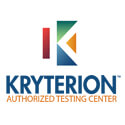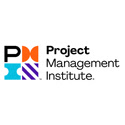CompTIA Server+ (SK0-004)
About This Course
CompTIA’s Server+ covers disaster recovery, troubleshooting, best server practices, storage, software and system hardware. The certification program is ideal for IT people, who are involved in maintaining, installing and troubleshooting local servers or area networks. Students can also gain insights into disaster recovery concepts through this course.
As we know today’s cutthroat IT ecosystem calls for maintaining, securing and planning a range of servers. CompTIA Server+ certification course validates that a candidate is skilled to do that. As an industry standard, CompTIA Server+ assists in improving a candidate’s performance within enterprises of diverse sizes.
Who Should Attend This Course
The course is ideal for:
- Service managers
- Storage administrators
- IT and server technicians
- Server administrators
It is also perfect for IT professionals, who are accountable for:
- Installation, maintenance and troubleshoot local servers or area networks
Why This Course
CompTIA Server+ certified professionals are trained to work with a range of systems and hardware helping them meet current as well as future IT requirements. As we know that tech trends such as data virtualization, security risks, etc. transforming the server landscape as we know it. In fact, the rise of data virtualization is transforming several IT departments into data centers.
The course will cover concepts of:
- Troubleshooting
- Disaster recovery
- Software and hardware
- Best IT practices
- Virtualization
- Storage
- Software defined networking
- Security risks
- Data centers
Did you know that experts with CompTIA Security+ certification earn an average salary of around $85,863 / annum. (Source: itcareerfinder.com)
Course Objectives
Server+ course will train you on:
- Best IT practices
- Disaster recovery
- Troubleshooting
- Software and hardware
- Storage
- Virtualization
- Data centers
- Software defined networking
- Security risks
Prerequisites
CompTIA recommends candidate to have approx. 18-24 months of IT background with basic understanding of networking and operating systems.
Course Benefits
- Disaster recovery
- Troubleshooting
- Best IT practices
- Software and hardware
- Storage
- Virtualization
- Data centers
- Software defined networking
- Security risks





























